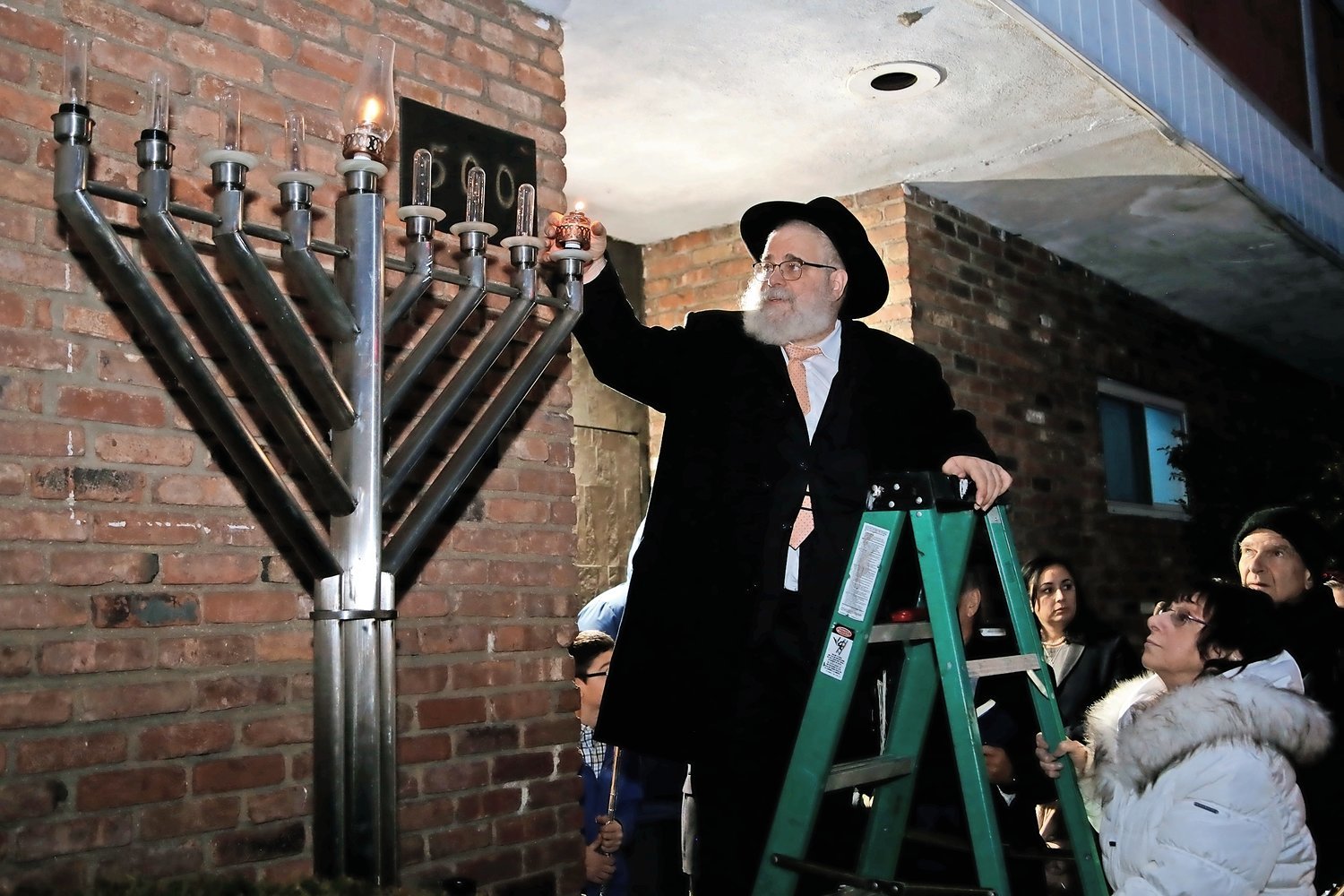Rabbi Chaim Blachman shares his guide to Hanukkah
It’s Chanukah — sometimes spelled “Hanukkah” and pronounced HAH-new-kah — and you are planning on attending a public menorah lighting. Here’s what you need to know.
In advance
First of all, there is nothing you need to bring and no particular way to dress. If you are a guy, you may want to have something — preferably a kippah — to cover your head. Also, if it is going to be an outdoor menorah, you may be outside for some time, so dress accordingly.
This event is truly open to the public, so please invite your neighbors, friends, neighbors’ friends, and friends’ neighbors. Obviously, kids are more than welcome.
Wait, why are we doing this?
Chanukah marks the miraculous victory of a ragtag band of Jewish freedom fighters who ousted the powerful Syrian Greeks from the Holy Land well over 2,000 years ago.
It was a victory of religious freedom against an oppressive regime of heavy-handed pagans who tried to force their culture and beliefs on the Jewish people.
Then, upon entering the newly liberated Holy Temple in Jerusalem, the victorious Jewish armies found a small jar of pure olive oil with which to kindle the lamp that always burned there. Miraculously, the oil — which was enough for just one day — burned for eight days, the time it took to bring fresh supplies.
The sages declared that lights be lit in every Jewish home to commemorate the miracle, publicly marking G‑d’s providence for His people and the triumph of light over darkness.
In recent times, the celebration spilled from Jewish homes and synagogues into the public arena, with Chabad Lubavitch — sponsored public menorahs appearing in public squares, government buildings, shopping malls and common areas all over the world. It’s a global phenomenon, and you are part of it!
What to expect
The centerpiece of the program will be the lighting of an oversized menorah, the candelabra lit in honor of the Chanukah holiday. In Israel it is called a chanukiyah, but Jews in the rest of the world use the traditional term “menorah,” which means “lamp” in Hebrew.
Every night of Chanukah, an additional flame will be lit, until all eight will all be burning on the eighth night of Chanukah. The central flame is not among the eight — it is considered a “helper” flame to light the others.
In addition to some short blessings before the lighting and some songs after, there is not much else that needs to be on the program. You can expect there to be some light refreshments, often doughnuts or potato pancakes called latkes.
If you are a public official
You may be called up to kindle the menorah or even say one of the blessings. Feel free to ask the rabbi to review your part with you, so you’ll be sure to know what to do when. If you are asked to give a talk, you can find lots of great content and information on the Chanukah megasite at chabad.org.
Things to know
Even if you attend a public lighting—and even if you were the one to light the menorah—you still need to do so at home with all the usual blessings and prayers.
On the subject of blessings, it is possible that the traditional blessings will not be recited before the kindling of the public menorah. Why is that? Probably because the lighting you see does not conform to Jewish law.
Here are two common reasons why: the menorah is powered by electricity instead of old-fashioned fuel and wick, and the menorah is not being kindled at the prescribed time — on the eight evenings of Chanukah after sunset.
You can assume that you are more than welcome to take pictures and videos. Post them on social media and let everyone know where you are. After all, the purpose of Chanukah is to #sharethelight.
The most important thing to know
There’s a good chance that someone is distributing menorah kits. If you do not have a menorah of your own, please take one and use it. If you already have a menorah, please take a kit and share it with a friend who can use one.
Happy Chanukah!

 56.0°,
Overcast
56.0°,
Overcast 




